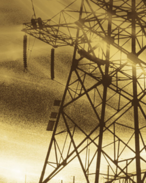This article is 22 years old. Images might not display.
Justice Wilde today said he expected to still be hearing the civil case into early April, with the calling of at least one overseas expert to give evidence.
Greymouth counsel Mike Camp QC started to outline Greymouth's case against Indo-Pacific subsidiary Ngatoro Energy Ltd (NEL) over its management of the small onshore Taranaki Goldie oil field and its operation of the now shut-in Goldie-1 well.
However, Indo-Pacific counsel Alan MacKenzie said he intended raising the possibility of Greymouth "plundering " the Goldie oil pool through tapping into that reservoir via the horizontally deviated Kaimiro-19 well, which Greymouth drilled in the neighbouring Kaimiro oil field earlier this year.
MacKenzie quoted extensively from EnergyReview.Net regarding industry rumours of Kaimiro-19 "straying" into Goldie, and from Wellington's Dominion Post paper regarding Greymouth principal Mark Dunphy saying he believed the company could recover about 500,000 barrels of oil from Kamiro-19. This figure happened to be the ultimate recoverable NEL figure for the Goldie-1 well.
When NEL learned that Greymouth was drilling Kaimiro-19 it installed downhole pressure gauges to monitor the pressure down the Goldie-1 well, which had been shut-in since last August. The drop in pressure build-up coincided exactly with the time Greymouth, "whether deliberately or inadvertently", tapped into Goldie with the Kaimiro-19 well.
NEL also believed that Kaimiro-19 drilling fluids had escaped into Goldie, significantly damaging that reservoir. It was also likely that Kaimiro-19 had tapped into Goldie above the gas-oil contact, which was bad engineering reservoir practice.
This was directly relevant to Greymouth's claim that NEL had not operated the Goldie field optimally because, in turn, NEL believed Greymouth was not employing best oil field practices, and operating Kaimiro optimally.
He added that Crown Minerals had not yet supplied bottom-hole location data, despite being requested to do so under the Official Information Act. It was therefore vital that Greymouth provide such information to the court so it could be established whether Kamiro-19 had finished in the Kaimiro mining licence or in the adjoining Ngatoro mining licence.
"This is of crucial relevance to whether NEL has managed Goldie optimally, we need this information as soon as possible," urged MacKenzie.
Camp said February flow rates at Kaimiro-19 would not be available until Thursday at the earliest, as Kaimiro-19 was already tied into the Kaimiro production station and gas was pumped there for processing with gas from other wells.
Justice Wilde later ruled that such information be provided progressively to the parties.
Camp said none of the matters raised by MacKenzie was relevant and that unitisation be considered by the parties if it was proven that the Goldie prospect extended over both licences.
He said Greymouth's claims related to what it believed were the circumstances surrounding NEL's drilling of Goldie-1 in 2001 on a "sole risk" basis, and the interpretation of the joint venture operating agreement.
Greymouth wanted to maximise ultimate Goldie hydrocarbon recovery, while NEL wanted to maximise the immediate recovery of oil. "Greymouth is interested in the long haul."
Greymouth estimated overall losses of between $NZ6.9-13.9 million dollars because of sub-optimal production. Goldie produced over 220,000 barrels of sweet light crude from March 2001 to when it was shut in last August.
Greymouth claimed it was entitled to 92.2564% of all revenues from Goldie on the basis that it bought Shell NZ's 59.57% stake in Kaimiro and that Shell had earlier "backed in" to the Goldie-1 sole risk venture, though other New Zealand Oil and Gas declined to do so.
That percentage figure was obtained by dividing the Greymouth share by the 59.57% plus the 5% NEL stake. NEL was obliged to sell all Goldie gas to Greymouth and Greymouth was obliged to purchase the gas.
Greymouth also maintained NEL had only been testing Goldie-1 as the partners had not approved a development plan and that NEL be removed as Goldie operator because of its fiduciary breaches.
Greymouth was claiming about $NZ40 million in damages because NEL had not operated Goldie optimally and had caused "irrevocable damage" to the field.
MacKenzie said that in the latter stages of this legal dispute Greymouth had displayed "a cavalier disregard" for NEL and its parent company Indo-Pacific Energy' and their attempts to conclude this matter satisfactorily.
Shell New Zealand bought back into Goldie in 2001, after buying Fletcher Challenge Energy, for an initial payment of about $US750,000 and agreeing to a premium of six times that amount before being entitled to a share of production. However, they warn this prolonged and boisterous legal jousting can only harm the image of the New Zealand energy industry.






















